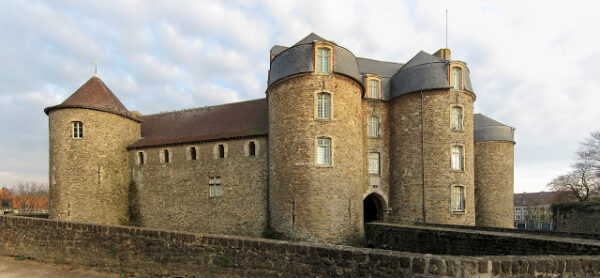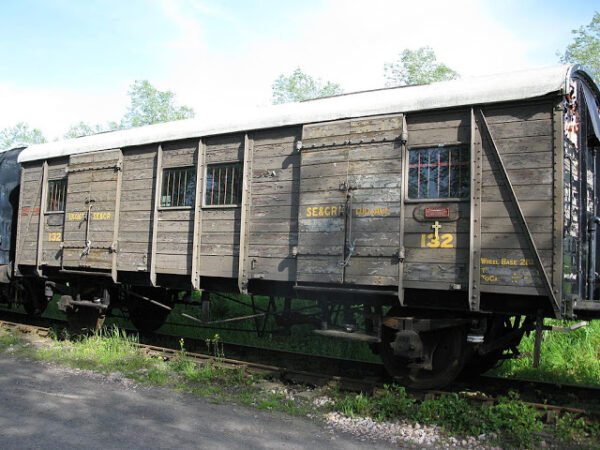The Origins of the Tomb of the Unknown Soldier

The coffin of “The Unknown Soldier” Westminster Abbey, London 11.11.1918
We all probably know what Armistice Day is all about (The end of WWI. 11.11. 1918), the significance of the poppy and what The Tomb of the Unknown Soldier represents (To remember soldiers slain in war, all over the world).
The origins of this tomb though, one of the most honoured in the world, are less known, as is a name seldom if ever mentioned; that of Reverend David Railton.
Reverend David Railton MC MA
What a beautiful story it is, a story of compassion, a story of empathy, a story never to be forgotten.
When Reverend David Railton, serving as army chaplin, on the Western Front during WWI, came across the grave of a fallen soldier, marked only with a humble wooden cross bearing the words; “A British Warrior who fell in the Great War 1914–1918 for King and Country’, scribbled in pencil, it broke his heart.

Reverend David Railton MC MA, (13 November 1884 – 13 June 1955). Church of England clergyman, a Military chaplain and the originator of the idea of the tomb of The Unknown Warrior.
The scene played on Reverend Railton’s mind, “There must be some way, in which the thousands of brave soldiers, who have died fighting for their country, can be honored and remembered forever” he thought.

Amid the appalling devastation and bodies of dead soldiers, a crucifix stands tall
In 1920 Reverend Railton, wrote to the Dean of Westminster, suggesting, “The Unknown Soldier”, be buried, amongst the kings, in Westminster Abbey, to honour the thousands killed in WWI (1914-1918).
The Dean of Westminster took the advice of Reverend Railton and plans were put into action to bring the fallen of WWI home.
The brave lad was finally laid to rest

Remains of The Unknown Soldier. Exhumed in France, to be brought home to England.
The remains of “The Unknown Soldier” were exhumed from separate battlefields of WWI and taken to the chapel of Saint-Pol-Sur-Ternoise, near Arras, in France.

First monument, in Saint-Pol-sur-Ternoise. In honour of the dead of WWI
On the evening of the seventh of November 1920, in the presence of Reverend George Kendall, Brigadier L.J. Wyatt and Lieutenant E.A.S. Gell, the remains were placed in six plain coffins and covered with the Union Jack.
Brigadier Wyatt closed his eyes, passed his hand over the six coffins and then touched one of the coffins.
The coffin Brigadier Wyatt chose, stayed in the chapel overnight, the five other coffins were taken away to be buried by Reverend Kendall.
On the eighth of November the remains of “The Unknown Soldier” were transported to a Medieval castle in Boulogne, where undertakers, placed the coffin into a casket made from the wood of oak trees from Hampton Court, England.

The medieval Castle of Boulogne France
The casket was banded with iron and a medieval crusader’s sword, from the royal collection, chosen by King George V himself, was placed on top of the coffin together with an iron shield inscribed with the words:
“A British Warrior who fell in the Great War”
The casket was placed on a military wagon and, drawn by six black horses, made its way to the harbour; the mile-long procession, led by over a thousand French school children and French troops accompanied by the sound of the tolling bells of Boulogne.
marine_old65.jpg?resize=500%2C302&ssl=1)
On 10 November 1920, the coffin holding the body of the Unknown Warrior was taken to Boulogne where HMS ‘Verdun’ lay waiting to bring him home to Britain.
Once the cortege reached the harbor it was put aboard HMS Verdun which, escorted by six battleships, made its way home to England, on reaching Dover it received a nineteen Field Marshal’s salute.

The Unknown Warrior about to be transferred at Boulogne to the British ship, HMS Verdun, bound for England in 1920
He is home
The remains of “The Unknown Soldier” touched English soil at ten thirty on the morning of the tenth of November 1920, at Dover Marine Railway Station and were carried, aboard “South Eastern and Chatham Railway General Utility Van No.132”, to Victoria Station, London.

The Unknown Warrior being removed from HMS Verdun by soldiers, a sailor and an airman.

The van in which the body of the Unknown Warrior was carried, before restoration in 2010.

The coffin of the unknown warrior is carried to Westminster Abbey

‘Unveiling of the Cenotaph London and funeral of the Unknown Soldier,Armistice Day 1920

The casket of “The Unknown Soldier” entered the Abbey, surrounded by a guard of honour, consisting of one hundred recipients of The Victoria Cross.
About one hundred women, who had lost their husbands and all of their sons in the war, were the guests of honour.
The brave lad was finally laid to rest, at the far western end of the Abbey, near the entrance, in soil brought from the main battlefields of the war.

The ceremony to seal the grave of the unknown warrior in Westminster Abbey
The grave of “The Unknown Soldier” is covered with black Belgian marble, with the inscription, by Herbert Edward Ryle, Dean of Westminster, engraved with brass, made from metal, melted down from wartime ammunition.
It is the only grave in Westminster Abbey, not allowed to be walked over.
Inscription, by Herbert Edward Ryle, Dean of Westminster, on the tomb of The Unknown Soldier:
Beneath this stone rests the body
Of a British warrior
Unknown by name or rank
Brought from France to lie among
The most illustrious of the land
And buried here on Armistice Day
11 Nov: 1920, in the presence of
His Majesty King George V
His Ministers of State
The Chiefs of his forces
And a vast concourse of the nation
Thus are commemorated the many
Multitudes who during the Great
War of 1914 – 1918 gave the most that
Man can give life itself
For God
For King and country
For loved ones home and empire
For the sacred cause of justice and
The freedom of the world
They buried him among the kings because he
had done good toward God and toward
His house
Around the main inscription on the tomb of The Unknown Soldier are four texts:
The Lord knoweth them that are his (top)
Unknown and yet well known, dying and behold we live (side)
Greater love hath no man than this (side)
In Christ shall all be made alive (base).
Elizabeth Bowes-Lyon laid her wedding bouquet at the tomb when she married the future King of England, George VI, twenty sixth April 1923, in memory of her brother, Fergus, who died at the battle of Loos in 1915.
Since then bouquets of all royal brides, married in Westminster Abbey, are placed on the tomb, the day after the wedding.
The latest bouquet placed there, belonged to Catherine Middleton, who married, William, Duke of Cambridge, on the twenty ninth of April 2011.

Catherine’s bouquet on the Tomb of the Unknown Soldier in London.
“The Tomb of the Unknown Soldier” has been a place of mourning, for the dead of WWI ever since.
Each Remembrance Sunday; Armistice Day, services are held and wreaths of poppies are laid at the feet of those who served in the war to end all wars.
Sadly, The Great War, happened all over again, just a little over twenty years later.
What a truly moving story and what a great shame that the name of the compassionate Reverend Railton has all but been forgotten.

Presidential Guard (Evzones) with the traditional winter uniform at the Tomb of the Unknown Soldier in front of the Hellenic Parliament. Constitution Square Platia Sintagmatos of Athens.
We will remember them


